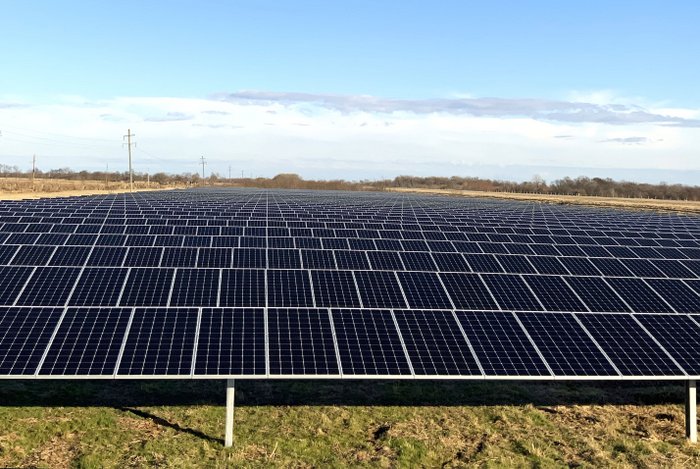
Connecticut Superior Court
This article was originally published on Energy News Network.
Court cases dispute the definition of “private residential use” for exempting solar installations from property taxes.
At least 15 municipalities in Connecticut are locked in court battles with solar companies who say they are wrongfully taxing residential solar installations. Since 2017, nearly 200 lawsuits involving hundreds of properties around the state have been filed in the state Superior Court. At the root of the challenges is a state statute granting a property tax exemption to renewable energy sources that generate electricity for “private residential use.”
A few years ago, some municipal tax assessors began interpreting that wording to mean that solar panels that are owned outright by the homeowner and/or produce power solely for the property are exempt, while those that feed power onto the grid or are owned by a third party are not. So they began assessing property taxes on systems in which the homeowner relied on leases or power purchase agreements. In some cases, installations were assessed after having previously been exempted.
“The problem is the statute is very gray and people have different interpretations,” said Shawna Baron, assessor for the town of Cromwell and president of the Connecticut Association of Assessing Officers. “It’s our job as assessors to follow the law and implement it the best we can.”
Cromwell is among the towns being challenged in court. Solar companies argue that systems with leasing or power purchase agreements should be exempt under the law.
Municipalities have a lot at stake
The solar companies are seeking a refund of the taxes they’ve paid out in the past few years. In Cromwell, that adds up to more than $200,000 in revenue so far, Baron said.
Attempts to reach a legislative fix have so far failed. Last year, lawyers for the municipalities proposed legislative language to counsel for the solar companies that would have expressly exempted all residential panels moving forward, while at the same time allowing towns to keep the revenues they’d already collected, according to Donna Hamzy, advocacy manager for the Connecticut Conference of Municipalities, an organization representing all 169 communities in the state.
“They discussed it as the most uniform and equitable way of moving forward,” she said. “It would also eliminate the need for litigation.”
But the municipalities were caught off guard, she said, when a bill suddenly “popped up” that clarified the scope of the exemption but omitted any language holding towns harmless for the previous assessments. It passed the House, but stalled in the Senate.
“Now here we are having had a year pass without any effective legislation to negate the need for continued litigation, which would have saved the towns additional legal fees,” Hamzy said.
February is Operations & Maintenance Month here at Solar Builder. Check out all of our O&M news and insights this month right here.
Similar legislation is back this year.
The sponsor, Rep. Joseph P. Gresko, D-Stratford, said he hopes lawmakers are able to put the matter to rest this session. His town is also a party to the lawsuits, with solar companies seeking to recoup hundreds of thousands of dollars.
“Ideally, I would love to stop this from happening in the future,” said Gresko, who works as sustainability coordinator for the city of Bridgeport. “We could say to the solar companies, ‘We closed the door going forward, but you’re not getting your money back from the towns.’ This is where the compromise would have to come in.”
That’s exactly what counsel for several of the towns asked for at a public hearing on the legislation last week. Attorneys Benjamin Proto and Kari Olson submitted testimony seeking an amendment that would validate the collection of taxes on commercially owned residential solar systems through the October 2019 grand list.
“With the difficult fiscal situations that municipalities presently find themselves in, as well as the substantial cost to continue litigating these tax appeals for both the municipalities and the solar companies, this amendment is the most appropriate and cost-effective compromise,” they said.
The lawsuits were consolidated late last year and are scheduled to move forward with discovery this year in Superior Court in Waterbury.
Other towns named in the suits include Fairfield, East Hampton, Wethersfield, Bloomfield, Norwich, Rocky Hill, Killingly, Groton, Ansonia, Somers, Greenwich, Naugatuck and Griswold.
In testimony submitted in support of this year’s bill, the Connecticut Green Bank’s legislative liaison, Matt Macunas, argued that assessors were “improperly” denying exemptions to systems with a lease or power purchase agreement. Such arrangements make up the bulk of the solar market in Connecticut, and have been critical to fueling adoption, he said.
Taxing the systems “at this critical stage will render previously constructed projects to no longer be viable and cause many future projects to become uneconomic in paying back a consumer’s investment,” Macunas said in his testimony.
Stephen Lassiter, manager of public policy for the solar giant Sunrun, which has filed about a dozen lawsuits challenging assessments, submitted a repeat of his testimony from last year, in which he argued that the assessors’ interpretation would have a disparate impact on lower-income households.
Those residents who are leasing systems wind up paying the tax as a pass-through cost from the solar company, while “those with the wherewithal to purchase a system outright will be granted a tax exemption,” he said.
Lisa Prevost is a longtime journalist based in Connecticut. She writes regularly about housing, development and business for the New York Times. Her work has also appeared in the Boston Globe, CNBC.com, Next City and many other publications. She is the author of “Snob Zones: Fear, Prejudice and Real Estate.” A native New Englander, Lisa covers Connecticut and Rhode Island.
-- Solar Builder magazine
Lắp đặt điện mặt trời Khải Minh Tech
https://ift.tt/2X7bF6x
0906633505
info.khaiminhtech@gmail.com
80/39 Trần Quang Diệu, Phường 14, Quận 3
Lắp đặt điện mặt trời Khải Minh Tech
https://ift.tt/2ZH4TRU








